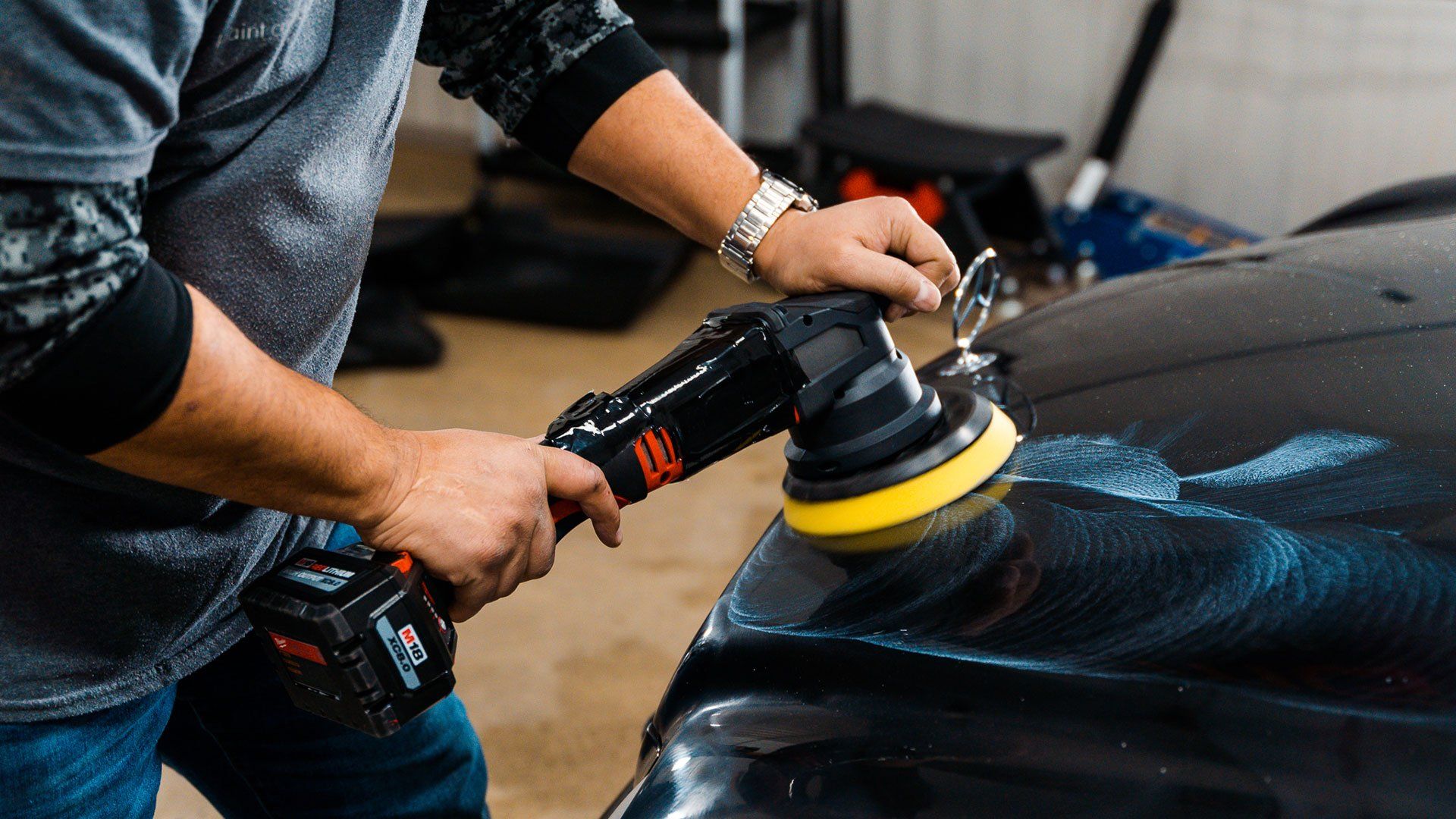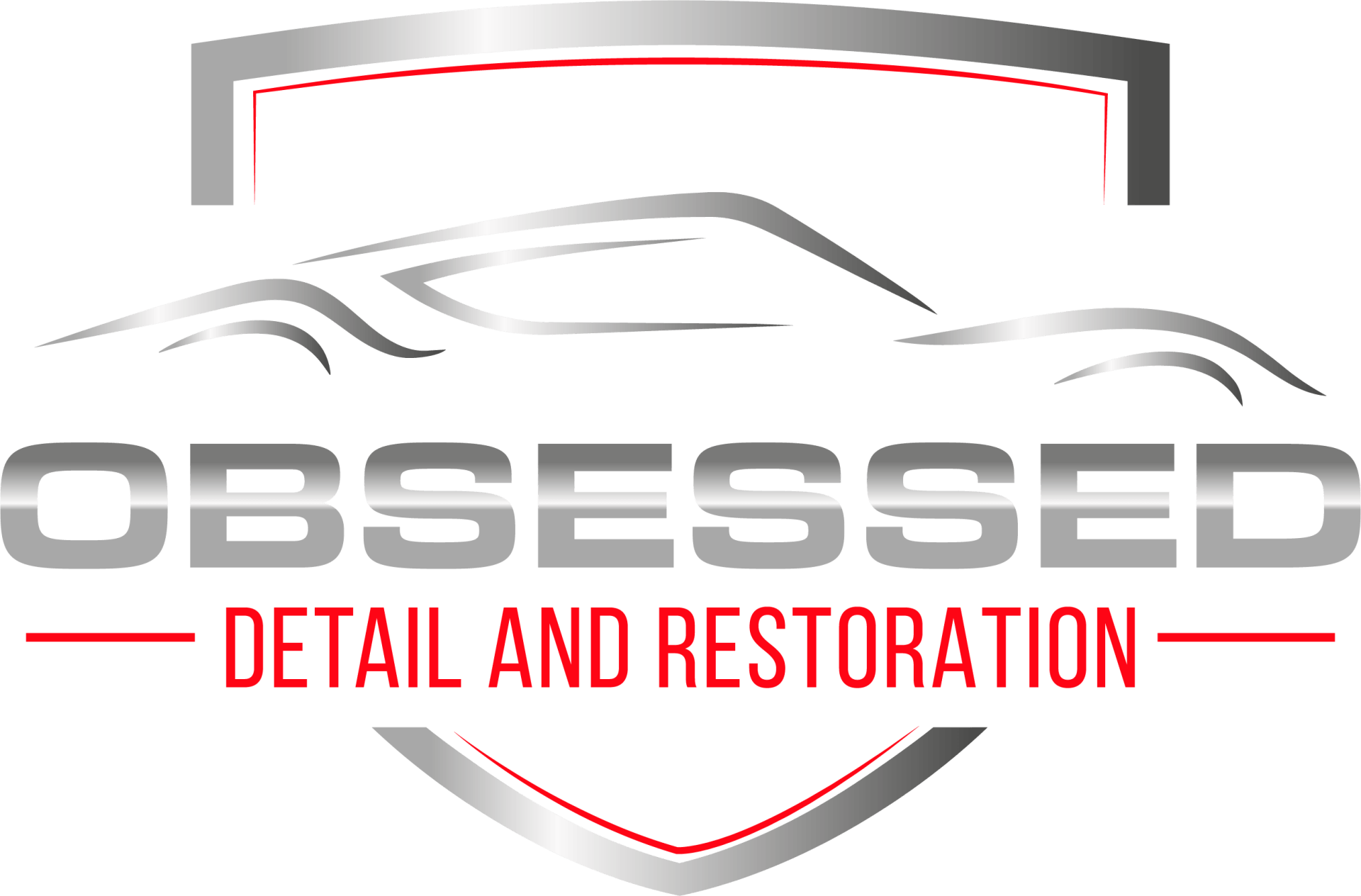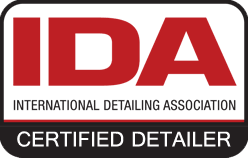DIY vs. Professional Paint Correction: What You Need to Know

When it comes to giving your vehicle a new shine, understanding the differences between do-it-yourself (DIY) paint correction and professional paint correction is essential. Whether you’re going for the perfect mirror-like finish or just a good clean and wax, there are pros and cons to DIY paint correction and professional paint correction services. So, brush up on the differences between DIY and professional paint correction to determine what best fits your needs. Let’s discuss the key points you need to know to make an informed decision about DIY vs. professional paint correction, so you can keep your car looking its best.
What is professional paint correction?
An automotive repair shop or detailing facility that specializes in restoring the exterior of a vehicle by correcting any paint blemishes, defects, or swirl marks offers a service known as "professional paint correction." It combines the use of different tools, such as dual-action buffers and polishers, with special compounds and polishes to restore the paint job to as close to its pre-damaged state as possible. The process often requires multiple steps and can be time-intensive.
But for many car owners, the results are worth it. Automotive enthusiasts have praised professional paint correction services for removing scratches from cars, which in turn can help maintain their value and retain their showroom-condition look. On the other hand, others argue that a DIY approach is more than enough. They point out that car owners with moderate skill can use a few inexpensive items available on the market to complete this type of task without involving a mechanic or detailing specialist.
That said, it’s evident that there are both advantages and disadvantages when considering DIY vs. professional corrections. Although it mostly depends on how extensive the damage is, taking your vehicle to a skilled technician can often result in superior and quicker outcomes. Whether you decide to go the DIY route or opt for a professional approach, it’s important to remember that this kind of job requires patience and expertise.
No matter if it’s an old classic car or a newly acquired ride, there’s no denying that investing some effort into reviving its paint job is always a great idea. And now that you know about the pros and cons of painting correction services, we can move on to looking at what’s involved in professionally correcting damage to your car's paintwork.
The Process of Professionally Correcting Paint Damage
The process of professionally correcting paint damage is often the same regardless of the type of paint correction service being performed. In most cases, a professional will assess the amount and type of damage before beginning the process. Next, they'll use specialized tools like metal-bonded abrasive pads to buff away imperfections. This kind of abrasive action removes the topcoat of clear coat that has degraded or been scratched away, leaving behind newer and healthier layers.
Professional paint correction services may also include steps like clay bar treatment and wax application, which will restore the original vibrant luster to the car without diminishing its essentially protective layers.
The debate between DIY and professional paint correction services is essentially moot, as it really depends on an individual’s level of skill and what kind of results they’re hoping to achieve. DIY kits can be used successfully by experienced detailers with plenty of time on their hands who are looking to save a bit of money, but those who don’t have the right resources or skills may find themselves spending more in those areas only to still not get satisfactory results. On the other hand, considering a professional for your car detailing needs could result in a beautiful, high-quality finish that stands up over time with little upkeep required for long-term care. With access to data on all kinds of paint finishes, from luxury cars to mundane sedans, professionals can provide customers with restoration work that exceeds expectations — if you choose wisely.
The differences between DIY paint correction and professional results are vast and worth considering carefully when selecting services for your car detailing needs. While some brave souls are willing to take on major restorative projects themselves, professionals offer a range of services that guarantee excellent results from years of technical experience and attention to detail. Whether you go with a professional or attempt some DIY tricks at home, make sure you’re prepared by doing research into both options before taking any risks with your beloved vehicle.
DIY Paint Correction vs. Professional Results
DIY paint correction and professional results can produce drastically different outcomes, depending on a variety of factors. Those who attempt to tackle the task by themselves must carefully consider the methods, tools, and techniques that are required for achieving a satisfactory result. Professional auto detailers understand the nuances of paint correction and have access to professional-grade tools and products that deliver consistent results. Many professionals also have experience and knowledge about which techniques produce the best results with minimal effort.
DIY paint correction can be an economical option if you already have all of the necessary tools, materials, and know-how. The downside is that minor mistakes can often lead to uneven, patchy finishes or even further damage to the original paintwork. In some cases, DIYers may end up doing more harm than good. On the other hand, professional results come at a cost, but they often guarantee a lasting finish that’s free of swirly patterns, streak marks, and other imperfections.
Professional paint correction providers also have specialized training and experience in recognizing potential problems that may occur when dealing with certain paints, finishes, and underlying surfaces.
Given these considerations, it’s important to weigh out all options carefully before investing time or money into any painting project. Ultimately, there’s no surefire answer as to which route is better; it will depend on the individual situation, budget limitations, and overall expectations with regards to quality. When deciding between going DIY or hiring an auto detailer, many would agree that it's worth it to invest in expertise if you want superior results that thoroughly protect your vehicle's valuable finish.
Cost and time involved
The cost and time involved in undertaking paint correction can vary significantly between DIY efforts and professional detailing services. DIY paint correction requires the purchase of specific equipment, supplies, polishes, and waxes, all of which can be costly. Professional services typically include a range of chemicals, tools, and polishing machines to perform their tasks more efficiently than amateurs. If done incorrectly using a DIY approach, costly mistakes can be made that may ultimately require professional assistance to correct.
On the other hand, the cost of professional services may be higher, but they are often completed quicker in comparison to DIY corrections due to the experience and expertise of a professional detailer. Furthermore, when working with a professional detailer, one is guaranteed top-notch results as well as experienced advice on how to maintain the car’s paint going forward.
Ultimately, both approaches present unique advantages and disadvantages when it comes to cost and time investments. While DIY paint correction is a great way to save money initially and is typically less expensive than professional services, it may end up costing more in the long run if mistakes are made or inadequate results cannot be achieved. Professional detailing services allow for quicker turnaround times and better-quality results but involve a greater financial investment up front.
At the end of the day, whether one chooses to go DIY or hire a professional for their vehicle’s paint correction needs depends heavily on personal preferences; however, it is important to understand both sides so that an educated decision can be confidently made. As transitioning into maintaining the difference between professional and DIY correction is essential for understanding which route is best for each individual's needs, let's explore this further in order to help make an informed decision moving forward.
The difference between professional and DIY correction
The difference between professional and DIY correction is an important one.
Professional paint correction
involves more than a standard car wash and wax job. It requires a significant amount of time and labor to restore the beauty of your vehicle's paint job. The typical procedure for performing a professional paint correction includes washing, clay barring, compounding, polishing, waxing, and sealant applications. Professionals use advanced tools like rotary buffing machines, power sanders, and industrial-grade cleaners and polishes. They are also trained in the process of testing products before use to ensure the best possible results.
On the other hand, DIY corrections are less intensive and require less time and manpower. Usually done by hand or with detailing sprays and wipes, DIY corrections only clean away surface contaminants from the vehicle's finish. These products can remove light blemishes but won’t necessarily restore the vehicle’s luster or protect against future damage. As a result, these types of corrections are often seen as more of a temporary solution than an actual form of maintenance.
Given that professional paint correction is costlier and more labor-intensive than DIY corrections, it's important to assess which form of protection looks best on your vehicle depending on your budget and needs. Generally speaking, professional corrections provide better results than DIY solutions, leading to higher satisfaction among users in terms of shine, clarity, longevity, and protection against future damage. In many cases, they will also include additional steps, such as paint protection films or sealant applications, to further protect the car from wear and tear over time. Therefore, if you truly value your vehicle, it’s worth investing in professional correction for better long-term results.
Frequently Asked Questions and Answers
What types of results can be expected from DIY paint correction?
DIY paint correction can provide decent results, but they are unlikely to be as good as professional results. DIY paint correction typically involves using tools such as orbital buffers, clay bars, and polishes to remove surface scratches and other blemishes from the vehicle’s paint, potentially improving its appearance. However, when done incorrectly, it could also potentially worsen the condition of the paint by causing swirl marks and marring. Additionally, it can be difficult or impossible for someone without experience to identify or fix more serious damage to the paint beneath the surface, such as dings or oxidation. Ultimately, the best way to ensure consistent and high-quality results is to have your paint professionally corrected by an experienced technician.
How difficult is it to do paint correction yourself?
Doing paint correction yourself can be quite challenging, depending on your level of experience. While paint correction is not necessarily a difficult task, it requires a great deal of skill and knowledge to do it properly. For example, you must be familiar with the correct tools and techniques to use in order to avoid creating further damage or uneven patches of paint. Additionally, it also requires time and patience, as the process may take several hours to complete. You must also take care to ensure that you are using the right products for each step of the process, such as polishes, waxes, and sealants, in order to achieve optimal results.
Ultimately, DIY paint correction is possible, but it’s recommended that you hire a professional if you’re new to this type of work or lack experience. Professionals possess the knowledge and expertise necessary to undertake successful paint corrections without making mistakes or causing further damage.
What specialized tools do professional paint correction services use?
Professional paint correction services utilize specialized tools to accomplish the task of correcting paint flaws. These tools range from high-powered polishers and buffers to abrasive compounds and specific microfiber cloths. High-powered buffers provide the necessary action needed for removing surface imperfections. Diamond abrasive pads are usually employed in combination with associated polishing compounds to refine the scratched or blemished car surface area. Finally, microfiber cloths are used to delicately buff and polish any remaining residue from the original correction to bring out the reflective shine of a freshly detailed vehicle.
These tools are specifically designed for car paint correction, so it’s generally not possible to duplicate professional results without them. DIY paint correction may sometimes be possible with tools, but it usually results in a much less dramatic improvement. The cost of professional-grade equipment can seem expensive initially; however, investing in high-quality products will lead to better overall results and improved longevity of your paint job.
Top-Notch Paint Correction Service in South Jordan, UT
If you're looking for top-notch paint correction services that will transform your vehicle's appearance, look no further than Obsessed Detail and Restoration in South Jordan, UT. Our team of experts is dedicated to providing unparalleled results through our comprehensive paint correction process, which includes removing swirl marks, scratches, and other imperfections to restore your car's paint to a flawless finish. Don't settle for anything less than the best when it comes to the appearance of your vehicle; schedule an appointment with us today and experience the difference that Obsessed Detail and Restoration can make!


